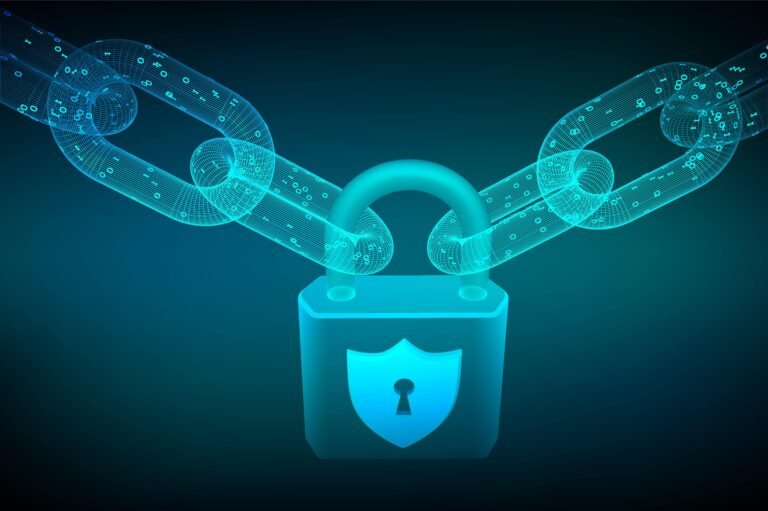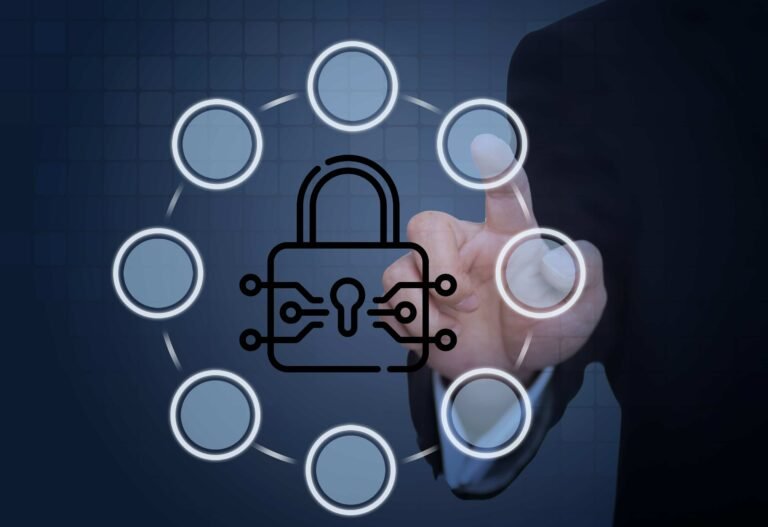10 Network Printer Security Best Practices You Need to Implement Now
Introduction
It is essential to protect your network printers in the modern digital era due to the prevalence of cyber threats and data breaches. Network printers, which are frequently disregarded in security procedures, might serve as weak points of access for hackers if they are not sufficiently secured. We’ll go over the top 10 recommended practices in this article that you should put into effect immediately to protect sensitive data and secure your network printers.
Update Printer Firmware Regularly
Frequent firmware updates are a basic component of network printer security maintenance. Updates to the firmware provide patches for identified vulnerabilities, ensuring that your printers have the newest security features. Use the printer’s online interface to access the settings or maintenance section and search for updates to upgrade the firmware. To download and install the firmware upgrades, adhere to the instructions.
Implement Secure Printing
By asking users to authenticate themselves before releasing print jobs, secure printing offers an additional layer of protection. This keeps private documents that are left on the printer tray unattended and out of the hands of unauthorized people. Set the printer’s settings to demand a PIN or password to release prints securely. Next, before their documents are printed, users can verify their identity at the printer.
Use Strong Passwords
Printers need to be password-protected, just like any other network-connected device, to avoid unwanted access. Instead of using simple passwords, use complicated ones that include a mix of capital, numeric, and special characters. To keep security, update passwords frequently and avoid from sharing them with anyone.
Enable User Authentication
User authentication makes sure that only people with permission can use the features and functionalities of the printer. Before printing, copying, or scanning, users must log in with their credentials. This way, you can easily trace user activity and stop unauthorized use. Via the printer’s settings menu, enable user authentication and adjust access rights as necessary.
Implement Access Controls
Due to its ability to restrict who can use the printer and what tasks they can complete, access controls are essential for maintaining the security of network printers. Organizations can reduce the possibility of illegal access, abuse, or tampering with sensitive data by putting access controls in place. This is a thorough explanation of how to set up network printer access controls:
Limiting Printer Acces
Selecting the people who should have access to the printer and its features is the first step in putting access controls in place. Evaluate the requirements of various departments or user groups in your company and set access levels appropriately. Administrative employees could need complete access to all printer features, whilst visitors might simply need the most basic printing capabilities.
Setting Up Access Controls
After defining the access levels, adjust the printer’s settings to implement access restrictions. The majority of modern printers give managers fine-grained control over user permissions, enabling them to define which individuals or groups can do specific tasks. To properly implement access controls, take advantage of features like role-based access control (RBAC), access control lists (ACLs), and user authentication.
Role-Based Access Control (RBAC)
Using RBAC, administrators can assign roles to individuals or groups according to their work duties or positions within the company. Roles like “administrator,” “printer operator,” and “guest user” should be defined, and each role should be given the appropriate permissions. This streamlines the permission assignment process and groups users with similar access requirements, making access control administration easier to handle.
Access Control Lists (ACLs)
ACLs offer precise control over printer resource access by defining rules that establish which users or groups are granted access and which are not. Establish Access Control Lists (ACLs) according to parameters like IP address, user identity, or time of day to limit access to particular services or functions. Make sure that ACLs are in line with organizational needs and security rules by reviewing and updating them regularly.
Regularly Monitor Printer Activity
An effective way to identify and stop security breaches, illegal access, and improper usage of printer resources is to keep an eye on printer activity. Organizations may learn about usage trends, spot any security risks, and ensure security policy compliance by keeping a close eye on printer activities. This is an in-depth tutorial on how to efficiently keep an eye on printer activity:
Importance of Monitoring
To keep network printers secure and reliable, it is necessary to keep an eye on printer behavior. Administrators can monitor user behavior, spot anomalies or suspicious activity, and react quickly to security concerns. Organizations can identify illegal access attempts, stop data breaches, and ensure the availability, confidentiality, and integrity of sensitive information by keeping an eye on printer activity.
Tools for Monitoring Printer Activity
Organizations may successfully monitor printer activity with the use of a variety of technologies and software solutions. Printer management software, such as Xerox CentreWare Web, HP Web Jetadmin, or PaperCut, offers network printers centralized monitoring and management features. Administrators can create reports, monitor usage data, check printer status, and set up alerts for important occurrences with these tools.
Real-Time Monitoring
Administrators may keep an eye on printer activities in real-time with real-time monitoring, which gives them instant insight into processes like printing, copying, scanning, and faxing. With the use of real-time monitoring technologies, managers may quickly identify and address security incidents by gathering information on user behavior, print job details, device conditions, and error messages. To get alerts immediately, set up real-time alerts for particular occurrences or abnormalities.
Compliance Monitoring
Monitoring compliance makes ensuring that the use of printers complies with industry rules, security requirements, and organizational policies. Keep an eye on printer activity to ensure adherence to internal security policies and procedures as well as data protection laws like GDPR, HIPAA, and PCI DSS. Analyze audit reports regularly, evaluate compliance with security procedures, and take swift action to resolve any non-compliance issues.
Encrypt Print Jobs

By encrypting the data transferred between the computer and the printer, encryption of print jobs adds a degree of protection and ensures that secret information is shielded from unwanted access. Organizations may protect against data interception, tampering, and eavesdropping during network transmission by encrypting print jobs. Here’s a comprehensive how-to for successfully encrypting print jobs:
What is Print Job Encryption?
Print jobs are encrypted by first utilizing cryptographic techniques to disorder their contents, making them unintelligible to those lacking the encryption key. Print data is protected against unauthorized access and interpretation via encryption, which makes sure that only authorized users possess the necessary decryption keys. Advanced Encryption Standard (AES) and Transport Layer Security (TLS) are two popular encryption algorithms used for print job encryption.
How to Encrypt Print Jobs
- Enable Encryption Settings: Use the printer’s web interface or administrative console to gain access to the configuration menu or printer settings. Search for security settings or encryption settings connected to print job encryption.
- Select Encryption Protocol: Select Encryption Protocol: Decide the encryption algorithm—such as AES or TLS your printer supports. Certain printers might provide you with a choice of encryption choices so you can choose the best protocol depending on security needs and network device compatibility.
- Generate Encryption Keys: Create the certificates or encryption keys needed to encrypt and decrypt print data. To produce secure encryption keys using industry-standard cryptographic algorithms, refer to the printer manufacturer’s instructions.
- Configure Network Settings: Verify that encrypted communication is supported by the printer’s network settings. To ensure secure network communication, turn on protocols like SSL/TLS and set up your firewall to let encrypted print traffic through.
- Test Encryption Functionality: Use a computer to send a test print job to the encrypted printer to check the encryption’s functionality. Make sure the print job can be successfully decrypted and produced by the printer once it has been encrypted during transmission.
Benefits of Print Job Encryption
- Confidentiality: Protecting sensitive information from unwanted access or interception is ensured by encrypting print jobs.
- Integrity: By preventing illegal modifications or tampering during transmission, encryption aids in maintaining the integrity of print data.
- Compliance: Data protection laws like GDPR, HIPAA, and PCI DSS, which demand the security of sensitive data during transport and storage, may need encryption.
- Risk Mitigation: Organizations can reduce the chance of identity theft, corporate espionage, and data breaches brought on by unauthorized access to print data by encrypting print jobs.
Secure Printer Network
Protecting against outside threats, unauthorized access, and data breaches requires securing the network that links printers. Print data confidentiality, integrity, and the preservation of printer resources are all ensured by network printer security best practices. Here’s a comprehensive how-to for successfully safeguarding the printer network:
Importance of Securing the Printer Network
Protecting sensitive data transferred between PCs and printers requires printer network security. Network-connected printers could be the focus of cyberattacks such as malware infection, illegal access, or data interception. Organizations may establish business continuity, preserve regulatory compliance, and reduce the risk of security breaches by putting security measures in place to protect the printer network.
Steps to Secure the Printer Network
- Network Segmentation: To separate printers from other networked devices and services, divide the printer network into segments. To reduce the attack surface and prevent lateral movement in the event of a breach, construct distinct network segments for printers using subnetting or VLANs (Virtual Local Area Networks).
- Firewall Protection: Use firewalls to monitor and filter network traffic going between PCs and printers. Set up firewall rules to prevent unauthorized or malicious traffic and to only permit approved device communication. Update firewall configurations often to keep up with changing security threats.
- Intrusion Detection Systems (IDS): Use IDS programs to find and notify administrators about unusual activity on the printer network or other security risks. To assist administrators in taking quick action in response to security breaches, intrusion detection systems (IDS) monitor network traffic, analyze trends, and spot signs of compromise.
- Network Access Control (NAC): Use network access control (NAC) technologies to impose security guidelines and manage printer network access. To make sure that only authorized users and devices can connect to printers, NAC authenticates people and devices before allowing network access. Set up NAC policies to limit access to critical printer resources and ensure adherence to security regulations.
- Secure Protocols: To encrypt data sent between computers and printers, use secure communication protocols like SSL/TLS. To prevent unwanted parties from intercepting or listening in on print data, enable encryption for printer communications. Set up printers to perform administration, scanning, and printing using secure protocols.
Train Employees on Security Best Practices
Since human mistakes and negligence can inadvertently expose printers and sensitive data to security dangers, employee training is an essential part of printer protection. Organizations may empower their staff to identify and mitigate possible threats, follow security regulations, and foster a culture of cybersecurity awareness by providing them with training on security best practices. Here is a comprehensive manual that will help you teach staff members the best practices for printer security:
Importance of Employee Training
By increasing awareness of potential security dangers, encouraging responsible conduct, and providing employees with the knowledge and skills to safeguard sensitive information, employee training is essential to improving printer security. Employees with proper training may reduce the possibility of security events and data breaches by recognizing phishing scams, avoiding social engineering attacks, and adhering to security standards when using printers.
Regularly Audit Printer Security
To determine the efficacy of current security measures, spot vulnerabilities or weak points, and ensure compliance with security rules and regulations, regular audits of printer security are crucial. Organizations can tighten printer security controls, reduce the probability of security incidents or data breaches, and proactively identify and address potential security issues by conducting thorough security audits. This is a comprehensive guide that will show you how to regularly audit printer security:
Importance of Regular Audits
- Risk Assessment: Frequent audits assist businesses in determining the security posture of their printing infrastructure, spotting possible threats or weaknesses, and evaluating the importance of correcting the level of risk.
- Compliance Verification: To make sure that printer security controls comply with legal and regulatory requirements, audits check for compliance with security policies, industry legislation, and data protection standards like GDPR, HIPAA, or PCI DSS.
- Continuous Improvement: By pinpointing areas where printer security procedures, policies, and technologies need to be improved upon or optimized, audits offer chances for continuous improvement.
Keep Printer Software Updated

Updating network printer security best practices is essential for fixing known vulnerabilities, improving efficiency, and preserving network printer security. Printers that use outdated software may be vulnerable to security issues including malware problems, illegal access, or data breaches. Organizations can ensure that printers have the newest firmware upgrades, security patches, and feature improvements by routinely updating the printer software. Here’s a comprehensive how-to for successfully updating printer software:
Steps to Keep Printer Software Updated
- Enable Automatic Updates: Set up printers to automatically download and install security patches and software updates from update servers or the manufacturer’s website. Activate automatic update notifications to notify administrators when new updates become available.
- Monitor Manufacturer Websites: Whenever a firmware update, software patch, or driver update for your printer model is issued, make sure to visit the manufacturer’s website. To be informed when there are updates, sign up for mailing lists or newsletters from manufacturers.
- Schedule Regular Updates: To ensure that printers are maintained up to speed with the newest firmware releases and security patches, plan regular software upgrades and maintenance tasks. Plan updates at off-peak times to avoid interfering with printer functionality.
- Test Updates Before Deployment: Make that software upgrades are compatible, stable, and functional in a controlled environment before deploying them to production printers. Before deploying updates to the complete fleet of printers, test them on a small portion of the fleet.
- Backup Printer Configuration: To avoid data loss or configuration mistakes, backup printer configurations, settings, and user data before applying software upgrades. In the event of an update-related problem, restore backups or, if required, revert to earlier firmware versions.
Regularly Review and Update Security Policies
For printer security measures to continue to be effective, relevant, and in line with changing security threats, technical improvements, and organizational requirements, regular reviews and updates of security policies are vital. Security policies offer directives, regulations, and processes for protecting printer assets, reducing security threats, and ensuring adherence to legal obligations. Organizations may improve their overall printer security posture, respond to new threats, and adjust to a changing security landscape by regularly reviewing and updating their security policies. This is a thorough how-to manual for reviewing and updating security policies regularly:
Steps to Regularly Review and Update Security Policies
- Establish Review Schedule: Based on organizational needs, legal requirements, and industry standards, establish a timetable for periodic evaluations of security policies, such as quarterly, semi-annually, or annually.
- Identify Stakeholders: To ensure thorough input and alignment with corporate goals, include important stakeholders in the policy review process, such as IT staff, security officers, compliance officers, department heads, and legal advisers.
- Gather Feedback and Input: Ask workers, supervisors, and experts in the field about their observations, experiences, and recommendations for enhancing security protocols and guidelines.
Conclusion
In conclusion, putting in place strong network printer security best practices procedures is critical to safeguarding private data, reducing security threats, and ensuring the privacy, accuracy, and accessibility of printer resources. Organizations can improve their printer security posture, lower their risk of security incidents or data breaches, and remain compliant with regulations by using the recommended practices described in this book. Every security measure—from putting encryption and access controls in place to updating firmware regularly and enforcing printer usage guidelines—is essential to protecting printers and print data from misuse, manipulation, and unauthorized access.







